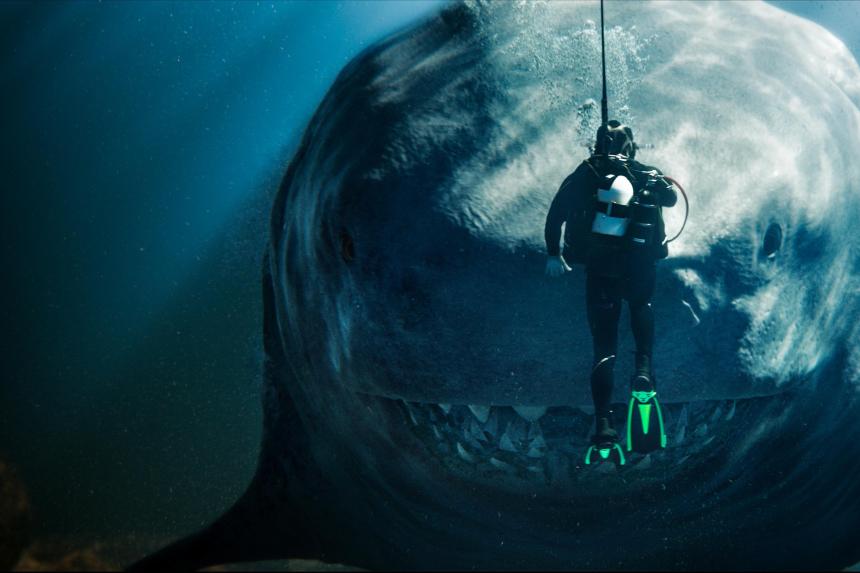CALIFORNIA – The prehistoric megalodon is known as one of the most fearsome creatures the world has ever known, a horrifyingly giant shark immortalised in the monster movie The Meg.
But after re-analysing the fossil evidence, scientists said on Jan 22 that they now think the shark was significantly thinner than previously thought.
While the 2018 B-movie starring actor Jason Statham depicted a megalodon preying on modern-day humans, the shark actually went extinct around 3.6 million years ago.
Previous research has suggested that it could have been up to 20m long.
But size estimates have varied widely because they were based on the only remaining fossils of the shark, which are teeth and vertebrae.
Also, scientists had assumed that the megalodon had a similar stocky body shape to its modern descendant, the great white shark.
However, a better model may be the thinner mako shark, according to an international team of researchers behind a study published in the journal Palaeontologia Electronica.
The team re-examined the fossil record and “discovered the megalodon was more slender” than had been thought, biologist Phillip Sternes from the University of California, Riverside said in a statement.
But in bad news for Statham in the next Meg movie, the shark actually may have been even longer than previously believed.
“It still would have been a formidable predator at the top of the ancient marine food chain, but it would have behaved differently based on this new understanding of its body,” Mr Sternes added.
In better news for the hapless human victims in a possible future Meg movie, the megalodon “may not have been a powerful swimmer” compared with the great white shark, said study co-author Kenshu Shimada, a paleobiologist at DePaul University in Chicago.
It also may have had to hunt less due to a longer digestive canal.
This could also affect the mystery of the megalodon’s extinction.
It was previously theorised that the shark died off because there was less prey around. But its updated body image could point towards a different culprit.
“I believe there was a combination of factors that led to the extinction, but one of them may have been the emergence of the great white shark, which was possibly more agile, making it an even better predator than the megalodon,” Mr Sternes said.
Professor Shimada said that knowing the true shape of the Otodus megalodon, as it is known in scientific circles, would require finding a more complete skeleton.
“The fact that we still don’t know exactly how O. megalodon looked keeps our imagination going,” he added. AFP

